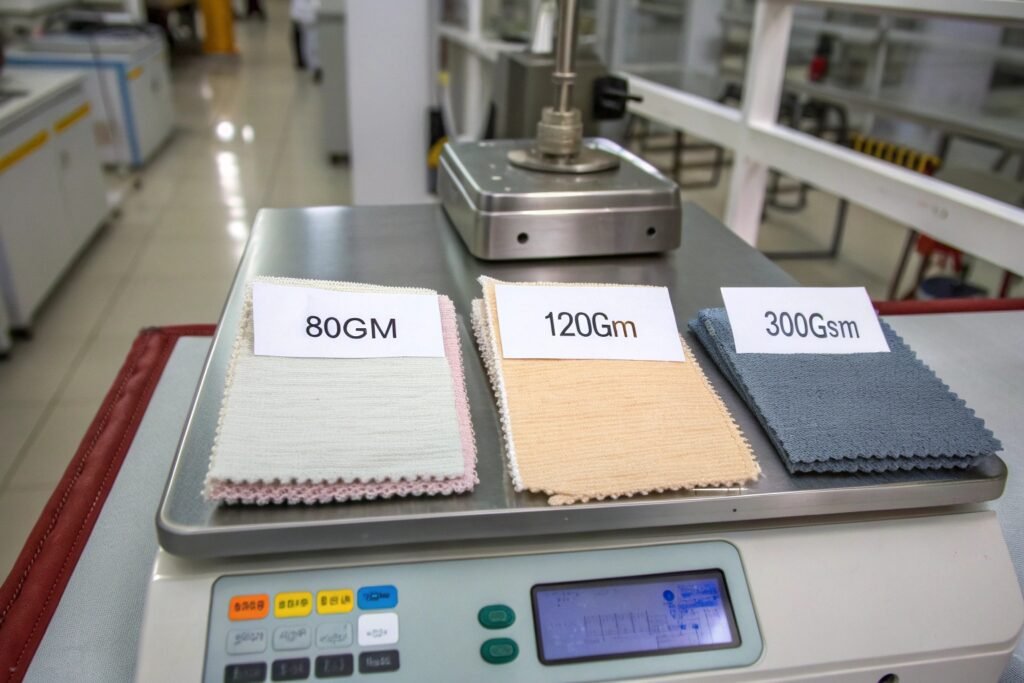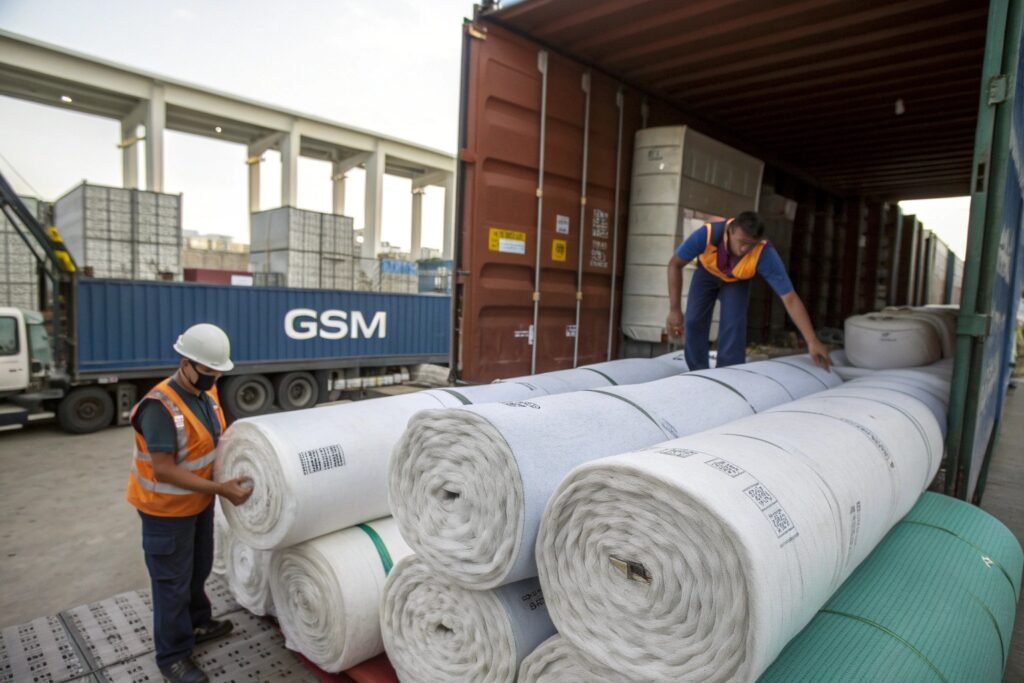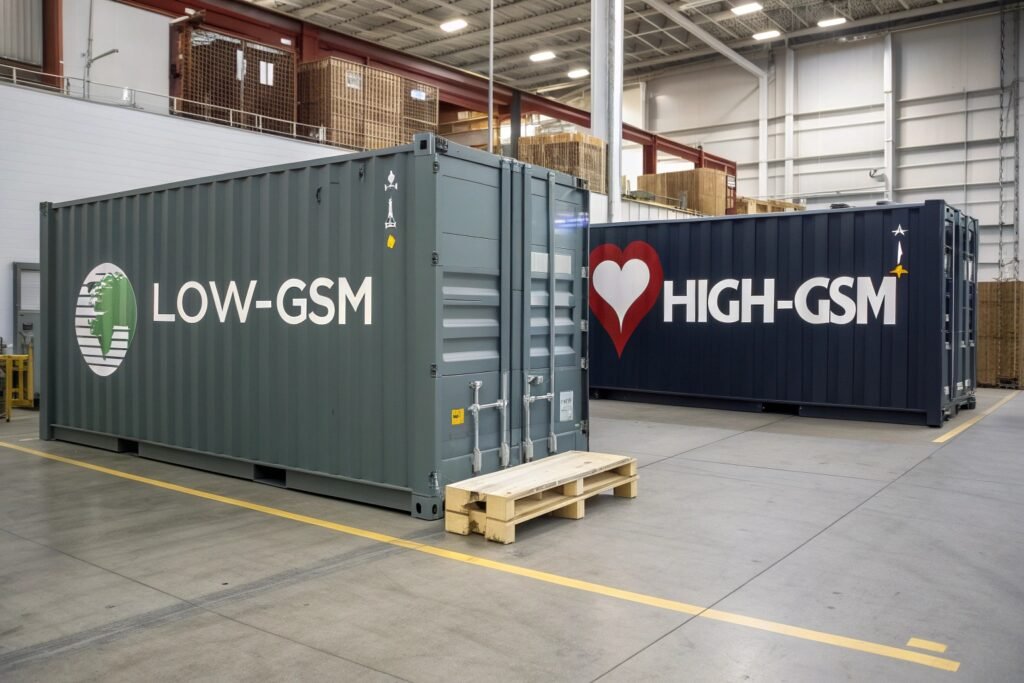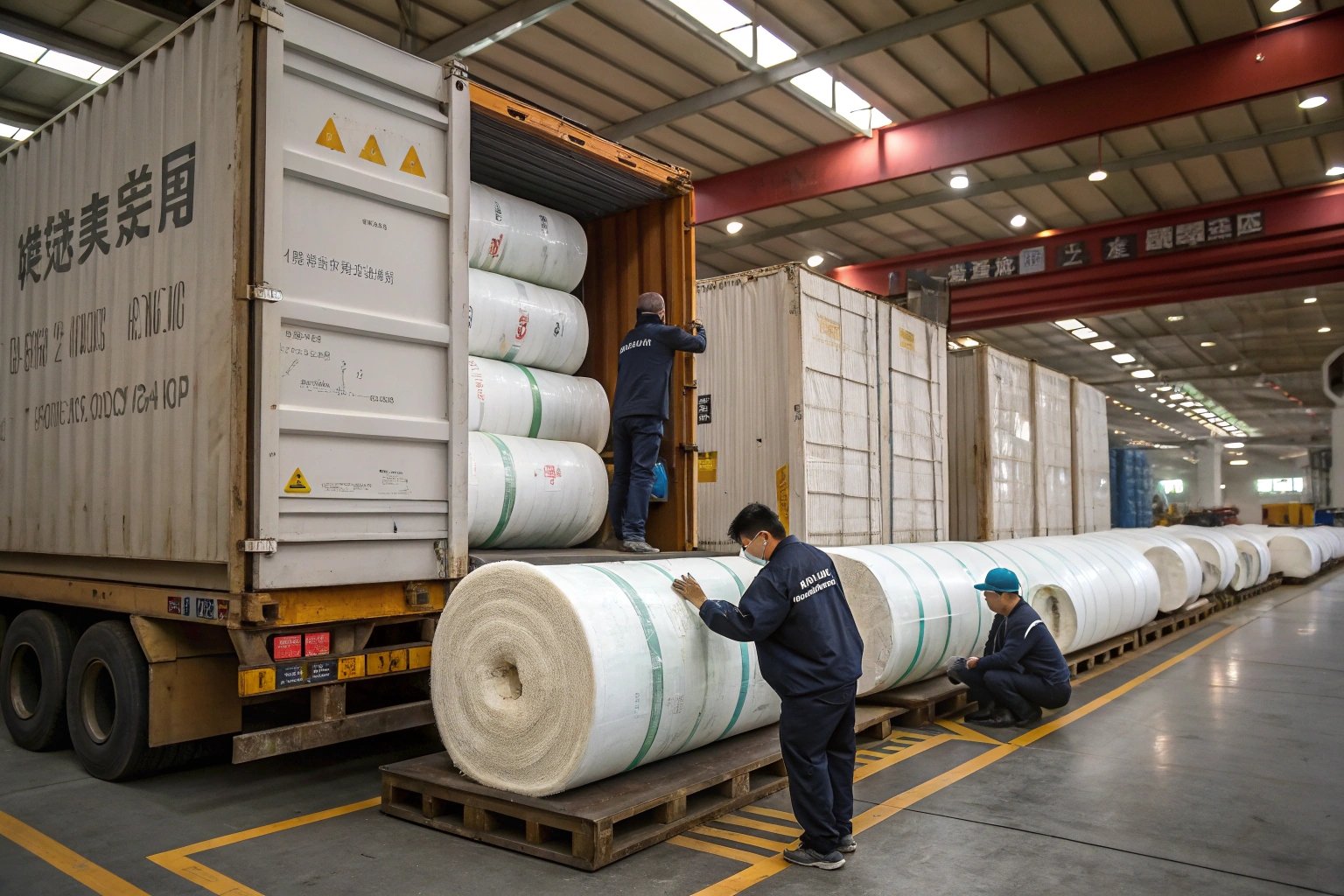For global fabric buyers, especially those working with suppliers like us in Keqiao, understanding fabric weight isn’t just about feel or drape—it directly impacts how much you pay in shipping. GSM, or grams per square meter, plays a central role in freight charges, packing strategy, and landed cost per unit. Many of our U.S. clients are surprised by how two similar-looking fabrics can carry vastly different shipping costs due to GSM differences.
Fabric weight (GSM) directly influences dimensional weight, carton count, and freight class—ultimately shaping your shipping costs, customs duties, and profit margins when sourcing internationally. Whether you're importing lightweight chiffon or heavyweight canvas, knowing the GSM helps you estimate container space and optimize load planning.
This article explores how GSM affects shipping rates, how to forecast costs, and why choosing the right GSM can make or break your international sourcing strategy.
What Is GSM and Why Does It Matter in Logistics?
Fabric weight, or GSM (grams per square meter), is one of the most critical specs in textile sourcing. But it’s also one of the most overlooked when it comes to shipping budgets.
GSM affects both actual weight and volume-based shipping cost—making it a core metric when forecasting total landed cost in international logistics.

What Exactly Is GSM in Fabric Terms?
GSM is the metric measurement that tells you how heavy a piece of fabric is per square meter. It reflects both fiber density and yarn thickness. A fabric with 300 GSM is denser and heavier than one with 120 GSM—even if both look similar at first glance.
As outlined by MasterClass, GSM is essential when specifying garments, upholstery, or industrial applications. Likewise, Mood Fabrics provides buyer guides based on GSM to match seasonal fabric needs and freight limits.
How Does GSM Affect Shipment Volume and Pricing?
In international shipping, carriers calculate rates based on chargeable weight, which could be the actual weight (kg) or the volumetric weight (CBM-based). High-GSM fabrics typically weigh more per roll and may result in fewer meters per carton or pallet. This increases both freight and handling costs.
For instance, air freight uses dimensional weight formulas like:
(Length x Width x Height) / 6000 = Volumetric kg
Heavier GSM = bulkier rolls = higher dimensional weight.
How Does GSM Affect Air vs. Sea Freight Pricing?
Whether you’re shipping by air for speed or sea for economy, GSM will influence your shipment's classification and cost-per-unit weight.
Higher GSM increases freight class and CBM usage—resulting in higher air freight charges and fewer rolls per container in ocean freight scenarios.

How Does GSM Impact Air Cargo Charges?
Air freight is charged by either actual weight or volumetric weight—whichever is greater. GSM contributes directly to both.
If you're shipping 100 meters of 300 GSM fabric vs 100 meters of 100 GSM, the higher-GSM fabric will weigh more and occupy more space. Carriers like DHL provide clear tools to estimate dimensional weight. Similarly, FedEx uses a divisor of 139 for international shipments to convert volume into weight.
Is Sea Freight More Forgiving with GSM?
Somewhat—but not always. While sea freight charges are primarily CBM-based, heavy GSM fabric means fewer meters per CBM. For example:
- 1000 meters of 100 GSM chiffon might take up 4 CBM
- 1000 meters of 400 GSM canvas might occupy 8–10 CBM
Platforms like Maersk show how container load planning should be GSM-sensitive to optimize costs. For FCL shipments, high-GSM can reduce how much fits in a 20GP or 40HQ container—raising unit logistics costs.
How to Optimize Packing Strategies Based on GSM?
Experienced fabric suppliers—like us at Fumao Fabric—plan packing layouts around GSM. It’s not just about fitting rolls into boxes; it’s about maximizing space while staying within weight limits.
Adjusting roll length, diameter, and stacking configuration based on GSM helps reduce total CBM, avoid excess charges, and streamline customs classification.

Can Roll Size Be Customized by GSM?
Yes. We often adjust roll lengths to fit air or sea freight rules. For heavy 350 GSM fabrics, we may limit rolls to 40 meters each to keep cartons under 30 kg. Lighter 80 GSM fabrics can go up to 100–120 meters per roll.
Companies like Flexport and Shippo recommend calculating both total volume and net weight to avoid overspending. Smart packing saves money.
How to Reduce Tariff and Handling Costs?
Customs in the U.S. and EU often reference declared weight and HS codes. Lighter GSM may fall under different tariff brackets. Moreover, heavy rolls may require forklift handling or palletization, adding to warehousing costs.
We also offer layered packing techniques and QR-coded weight labels to help importers calculate exact duty per SKU—something Import Genius tracks in global sourcing.
Does GSM Influence Sustainability and Carbon Emissions?
In today’s sourcing climate, sustainability matters. Your choice of GSM affects how much fuel, space, and emissions your shipment generates—especially for frequent replenishments.
Lower GSM fabrics reduce emissions per meter shipped, enable more efficient container use, and align better with low-impact logistics strategies.

Are Lighter GSM Fabrics More Eco-Friendly for Shipping?
Generally yes. A container filled with 100 GSM fabric can carry significantly more total meters than one filled with 400 GSM canvas—using the same fossil fuel load.
Many brands aiming for carbon-neutral logistics prioritize compact and lightweight materials. Carbonfund.org encourages calculating emissions per kg/km to offset shipments. Also, EcoCart supports e-commerce brands to integrate carbon-neutral shipping into fulfillment platforms.
How to Communicate GSM-Based Sustainability to Buyers?
Transparency is key. At Fumao Fabric, we provide clients with carton-wise GSM, weight, and emission data through QR tracking. Buyers use this data to inform ESG reports or justify sustainability claims on product packaging.
Sites like Sustainable Apparel Coalition provide tools to link GSM choices with life cycle assessment, making fabric specs not just a cost factor—but a climate statement.
Conclusion
GSM isn’t just a technical detail—it’s a financial, operational, and environmental variable that every fabric importer needs to understand. Whether you’re sourcing chiffon, canvas, or jersey, fabric weight influences every step of the supply chain—from packing density to air cargo fees to sustainability scoring. When working with trusted partners like us at Fumao Fabric, you’ll gain GSM-calibrated solutions to balance cost, quality, and logistics efficiency for every meter shipped.










